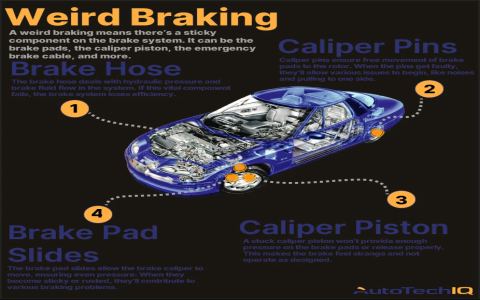Brake Fan Systems
A brake fan, also commonly referred to as a brake cooling fan or brake rotor fan, is an active component designed to enhance the dissipation of heat from a vehicle’s braking system. Its primary function is to direct a forced airflow over the brake rotors, calipers, and sometimes brake pads to reduce their operating temperatures.
Purpose and Operational Benefits
The strategic use of brake fans serves to improve braking performance, consistency, and the lifespan of brake components, especially under conditions of high thermal load. Key benefits include:
- Temperature Reduction: Actively cools brake components, significantly lowering their peak operating temperatures.
- Mitigation of Brake Fade: By preventing excessive heat buildup, brake fans help maintain consistent frictional characteristics of the brake pads and reduce the likelihood of brake fluid boiling, thereby minimizing brake fade during prolonged or aggressive use.
- Extended Component Life: Lower operating temperatures reduce the rate of wear on brake pads and rotors. It can also prolong the life of caliper seals and brake fluid.
- Improved Performance Consistency: Ensures more predictable and reliable braking performance, particularly in motorsport or heavy-duty applications.
- Enhanced Safety: More stable and effective braking contributes to overall vehicle safety, especially in demanding driving scenarios.
Typical Applications
Brake fans are most commonly implemented in environments where braking systems are subjected to severe thermal stress:

- Motorsport: Widely used in various forms of auto racing (e.g., endurance racing, touring cars, GT racing) to maintain optimal brake performance throughout a race.
- High-Performance Vehicles: Often found on track-focused supercars or modified high-performance street cars where aggressive braking is anticipated.
- Heavy-Duty Commercial Vehicles: While less common than in motorsport, auxiliary cooling systems, potentially including fans, can be beneficial for trucks or buses operating in challenging terrains with frequent, heavy braking.
- Armored or Special Purpose Vehicles: Increased vehicle weight often necessitates enhanced braking capacity and cooling to manage higher thermal loads.
Design and Implementation Considerations
Effective brake fan systems consider several factors:
- Airflow Path and Efficiency: Design of ducting and fan placement is crucial to ensure airflow is directed precisely to the hottest areas of the brake assembly, typically the rotor vanes and caliper body.
- Fan Specifications: Selection of fans based on airflow rate (CFM), static pressure capabilities, power consumption, and durability in harsh environments (vibration, debris, temperature).
- Power and Control: Fans are typically electric and can be activated manually, thermostatically (based on brake temperature), or linked to vehicle speed or brake application.
- Integration and Packaging: Mounting solutions must be robust and not interfere with suspension travel, steering, or other vehicle components. Aerodynamic impact might also be a consideration.



